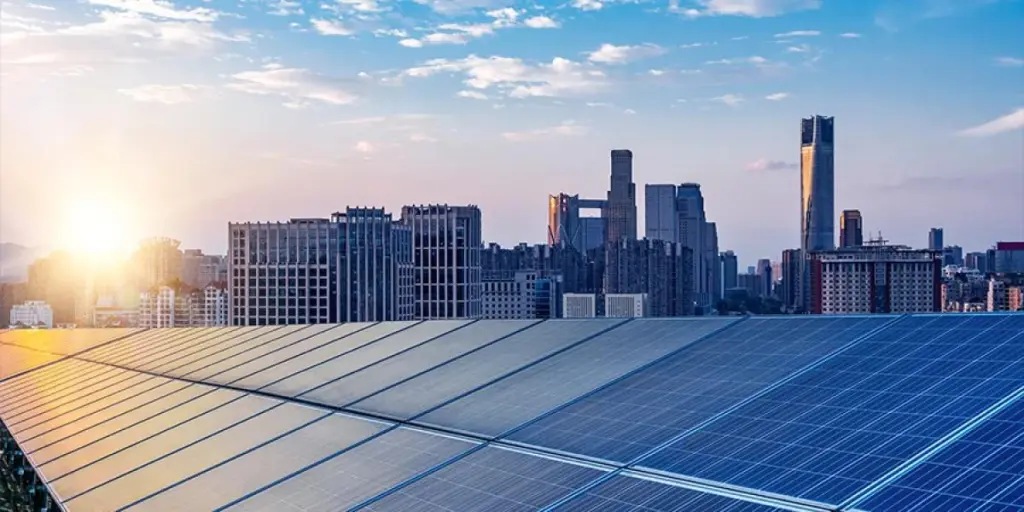- A Princeton University report expects the IRA 2022, once it becomes a law, to push annual utility scale solar PV installations in the US to an average of 49 GW in 2025-26 and exceed 100 GW level in 2029
- For wind energy, it would be an average of 39 GW annually in 2025-26, up from 15 GW in 2020
- The report’s preliminary analysis expects greatest impact on investment in wind power and solar PV nearly doubling to $321 billion in 2030, up from $177 billion under current policy
- US Senate’s clearing of the IRA 2022 now sends it to the House of Representatives and then President Joe Biden before it can become a law
The world’s 2nd largest solar market is set to heavily incentivize clean energy deployment and manufacturing with $369 billion investment under Inflation Reduction Act of 2022 (IRA) that has now been cleared by the US Senate making it the largest clean energy investment for the country to date.
Once the bill becomes an act, the US will be officially en route to reduce its carbon emissions by around 40% by 2030 and invest in domestic manufacturing of clean energy, including solar panels.
Jesse Jenkins, Professor at Princeton University, whole head the Zero Lab, shared preliminary analysis of the bill from the Rapid Energy Policy Evaluation and Analysis Toolkit (REPEAT) Project report saying it would drive down the cost of adopting clean energy and other climate solutions across the country by bringing down annual US energy expenditures by at least 4% by 2030 since rising energy costs are the ‘biggest driver of inflation right now’.
According to the analysis, the act will turbocharge annual additions of utility scale solar PV that were around 10 GW in 2020, to 49 GW per year in 2025-2026, about 5 times the 202 pace, and its deployment will further increase thereafter, up to 129 GW per year in 2031-2032, much more than for any other technology. For wind energy, annual installations are expected to jump up from 15 GW in 2020 to an average of 39 GW annually during in 2025-2026.
The IRA will have the greatest impact on investment in wind power and solar PV, nearly doubling to $321 billion in 2030, up from $177 billion under current policy, as per the report. There will be $37 billion in new tax credits to strengthen local manufacturing of wind and solar PV components, batteries and clean vehicles, and process critical minerals. Of course, these measures will also create manufacturing jobs all across.
For instance, for the production of various solar components, the manufacturing tax credit offered will be as follows:
- $3.0 per kg for solar grade polysilicon
- $0.40 per m² for polymeric backsheet
- $12.0 per m² for solar PV wafer
- $0.4 per W DC for thin film or crystalline PV cell
- $0.7 per W DC for thin film or crystalline PV module
Similarly, there are tax credits for other components of a solar system like inverters, energy storage, even trackers, along with for wind power technology.
These credits are planned to come into force after December 31, 2022 and remain in effect till December 31, 2029 post which these will be lowered to be phased out completely by 2033. Phase out is planned to be executed as down to 75% from original credits in 2030, down to 50% in 2031, 25% in 2032, and 0% after December 31, 2032.
But before all this can happen, the bill still needs to be cleared by the House of Representatives and then signed by President Joe Biden to become a law. The bill could be cleared in the Senate after the support fromWest Virginia Senator Joe Manchin could be secured.
Meanwhile celebrating the passing of the bill by the Senate, Biden said, “This bill also makes the largest investment ever in combatting the existential crisis of climate change. It addresses the climate crisis and strengthens our energy security, creating jobs manufacturing solar panels, wind turbines, and electric vehicles in America with American workers. It lowers families’ energy costs by hundreds of dollars each year.”
President and CEO of Solar Energy Industries Association (SEIA) Abigail Ross Hopper said, “The solar industry has set a goal to account for 30% of all US electricity generation by 2030, and this legislation will be a catalyst for reaching that target. Now the work can begin to build out America’s clean energy economy with historic deployment, domestic manufacturing, investments in low-income communities, energy storage, smoother interconnection, and so much more.”
A summary of the 755 pages long bill is available here, and the bill in its entirety here.
Source from Taiyang News
Disclaimer: The information set forth above is provided by Taiyang News independently of Alibaba.com. Alibaba.com makes no representation and warranties as to the quality and reliability of the seller and products.




